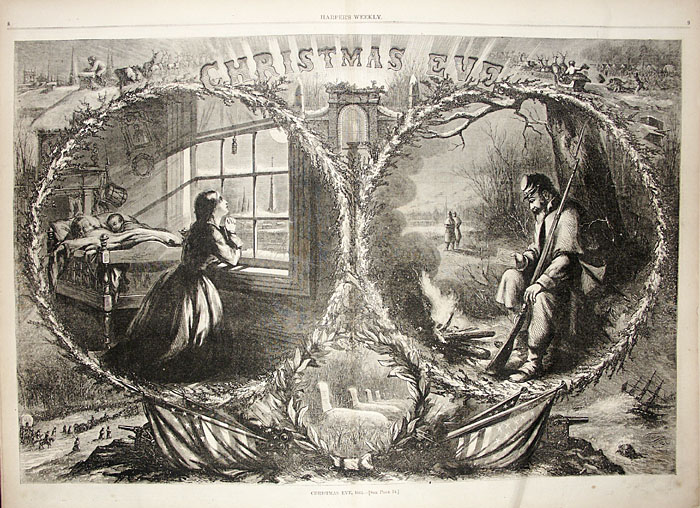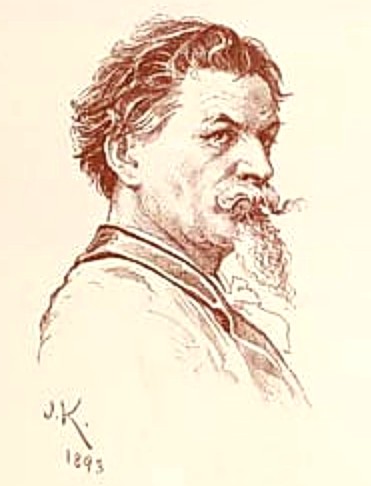The Evolution of Political Cartoons Through a Changing Media Landscape by Anne McCallum
|
As the ever-changing media landscape continues to evolve so does its content and in turn how that content is received. Central to the heart of American media are politics. American political ideology has been played out over the decades in conventional forms consisting of essays and written publications. Just as important to that ideology is American political opinion construed through drawings. Political cartoons have seen the scope of changing media in both content and delivery. They represent vivid, imaginative insight into politics and popular opinion. Today's political cartoons represent a fusion of pop culture and politics; and can be seen in a mired of ways. The web has become a new outlet for political cartooning. News and media today are certainly a far cry from the birth of quintessential political cartoons.
|
|
|
|
American history could be essentially documented by great cartoonists: cartoons became effective because all audiences could become influenced. The visual images contained simplicity and brevity, which were important. Also contributing the success of cartoons was the high illiteracy rate. With many Americans being able to read traditional print media, cartoons became a new outlet for information and new way to spark debate. The tradition of visual satire continued into the Civil War where Thomas Nast is most notable known for his cartoons in Harper's Weekly. Nast is known for his graphic social commentary on the Civil War, which was quite often intensely clear. Political cartoonists like Nast analyzed serious and complex issues and made them humorous. Boss Tweed once blamed his decline the "damned pictures" (Iziren). Nast's work is another example of the impact of political cartoons on American society. |
|
Following Nast's work was that of artist Joseph Keppler's who established the magazine Puck. Puck's cartoons were influence by German and Italian models. These cartoons "marked a significant moment in which the ideas of an intellectual elite could be successfully relayed to the masses." The use of "illustrated humor" allowed Puck to ridicule prominent figures of the day (Backer). This ridicule turned to commentary on politics and culture.
Political cartoons quickly solidified a place in American culture and politics and are now an accepted form of mainstream media. Today their place is as prevalent as ever. The longevity of cartoon as a medium for political expression then begs the question of evolution. With the changes and evolution of media has political cartooning undergone a metamorphosis? Cartoons have changed in both content and delivery. |
|
The first cartoons of the colonial era tackled debates among colonies, cartoons
soon took on the Civil War and with World War II the government used political
cartoons as propaganda.
Today cartoons cover issues on terrorism and dot coms.
| Cartoons today are changing not only in content but also in the manner in which they are received and the direction in which they are going. The future of cartoons and perhaps the most power catalyst for their evolution is the World Wide Web. For example organizations like PETA, Amnesty International, and Brady Campaign to Prevent Gun Violence are taking political cartooning to the next level using the web. These organizations are using short online movies to get their points across. These movies contain parody and satire and have an almost caricature like sense to them. In "See Our Film, Join Our Cause" by Jenn Shreve this new movement is chronicled and compared with the more traditional political cartoons. Joseph Sachs, co-founder of Free Range Graphics says, "We think of these really in the tradition of political cartoons. It's a tried and true method of getting ideas out to people." |
|
In the spirit of evolution and metamorphosis, Jenn Shreve
begins to explore the effect of computer programs and their manipulation
of images and how, in a sense, it's becoming a political statement
where the digital age meets political cartoons. Images doctored on
a computer now have a place alongside political cartoons. One of the
most notable examples of manipulated images includes an image of a
tourist, edited to appear atop the World Trade Center before the jetliner
headed into it (see right). |
In "Photoshop: It's All the Rage," Shreve writes "Photoshopping, as its practitioners call it, is a booming online pastime for hobbyists and graphic designers whose altered documents have taken up residence in the popular imagination alongside political cartoons and satirical text." Shreve cites a growing number of website dedicated to "visual puns, satirical commentary and political expression" (Shreve). Evolution of political cartoons is obvious and the future uncertain. |
Media has changed over each century, from the printing press to the World
Wide Web;
change has been inevitable and dramatic. It is no surprise that media's content
also
evolves and political cartoons are no different. Although they are an entity
unto
themselves there are sharply contrasting differences with the turn of each
century.
Political cartoons in America have changed dramatically in content and presentation,
and it's impossible to predict the changes in the future. The only definitive
statement to be
made is that they will continue to impact popular culture and opinion.
Works Cited
Backer, Dan. A Brief History of Political Cartoons. 22 Jul 2004 <http://xroads.virginia.edu/-MA96/PUCK/partl.htnil>
Cagle, Daryl. Today's Best Cartoons. 22 jul 2004 <http://cagle.state.msn.com/politicalcartoons/>.
Edwards, Janis L. Political Cartoons in the 1988 Presidential Campaign. New
York: Garland Publishing Inc., 1997.
lziren, Adeline. "Competition: Drawing a line under trade injustice."
The Guardian 07 2004 Lexis Nexis . 22 Jul 2004
<http://80-web.lexis- nexis.com.proxy.library.vcu.edu/universeldoelist?-m=d8cOe3a9aa8437c9ee4dfO5651904
457&wchp=dGLbVzz-zSkVA&-md5--94dfOa332a236bf6Of562fddf38e8ff3>.
Shreve, Jenn. "Wired News." 11 2001. Photoshop It's All the Rage.
22 Jul 2004 <http:/Iwww.wired.com/news/culture/0,1284,48342,00.htnii>.
Shreve, Jenn. "Wired News." 08 2001. See Our Film, Join Our Cause.
22 Jul 2004 <http://www.wired.com/news/digiwood/0,1412,45628,00.html>.
Tourist of Death. 22 Jul 2004 <http://www.touristofdeath.com/index.php>.
Home - Student Projects - Next

